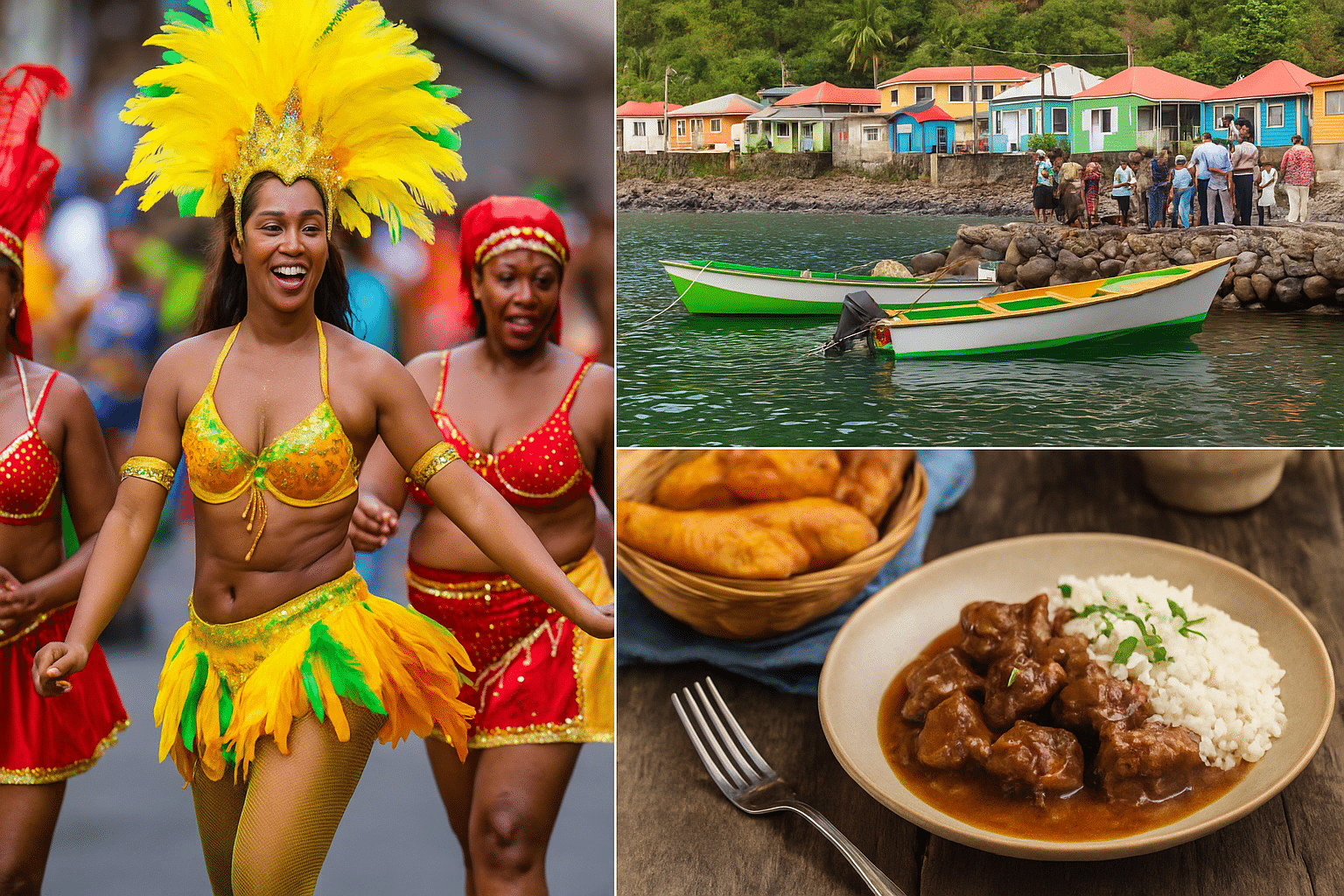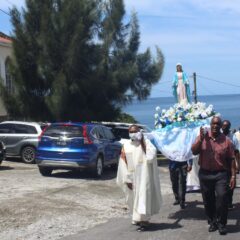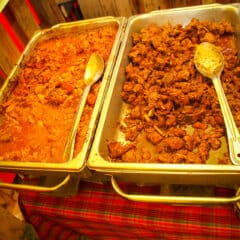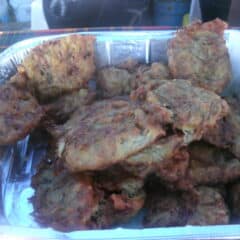
Village feasts in Dominica are vibrant celebrations of faith, food, and community. Rooted in Catholic patron-saint traditions and enriched by Creole culture, these festivals are among the most authentic ways to experience Dominican life. Each feast blends devotion, music, and cuisine, bringing together locals, returning diaspora, and visitors in an atmosphere of joy and togetherness.
Why Village Feasts Matter
Every parish in Dominica has a patron saint or chapel dedication, and feast days are major highlights of the cultural calendar. These occasions are more than community parties; they are sacred and social events where traditions are preserved and celebrated. From early morning church services to night-long dancing, feasts reflect the island’s heritage and unity.
Top 5 Biggest Feasts of the Year
If you’re visiting Dominica, here are the top five must-experience celebrations:
- Warner – Warner Fête (May 1st)
A massive Labour Day feast with music, BBQs, drinks, and all-night revelry. One of the most popular gatherings on the island. - Marigot – May Fest (May)
The largest east-coast feast, drawing crowds with food, live bands, and cultural performances in Dominica’s third-largest community. - Grand Bay – Fête Isidore (Pentecost Monday)
Famous for drumming, dancing, and unmatched community energy; a cultural feast at its finest. - Scotts Head – St. Peter’s Feast (July)
Known for the blessing of fishing boats where the Caribbean meets the Atlantic, paired with music and feasting. - Coulibistrie – St. Anne’s Feast (July 26)
Among the most popular village feasts, with food stalls, Creole dress, and lively entertainment.
Major Highlights
- Fishermen’s Feasts (St. Peter’s Feast): Held in June and July in fishing villages such as Colihaut, Dublanc, Bioche, Newtown, and Scotts Head. Boats are decorated and blessed in vibrant seaside ceremonies, followed by seafood, music, and merriment.
- Grand Bay – Fête Isidore: Celebrated on Pentecost Monday, this feast features lively drumming, traditional dances, and communal meals drawing crowds from across the island.
- Coulibistrie – St. Anne’s Feast: Around July 26, one of the most popular village feasts, known for food stalls, cultural performances, and community spirit.
- Scotts Head – St. Peter’s Feast: Mid-July, famous for its boat blessing ceremony and the scenic backdrop where the Caribbean and Atlantic meet.
- Soufrière – St. Luke’s Feast: Mid-February, combining religious devotion with Creole food and music.
- Pointe Michel – La Salette Feast: September, marked by solemn candlelit processions and vibrant social gatherings.

Procession winding through the streets of Pointe Michel during La Salette Feast.
Cultural & Food Festivals of Dominica
- Bagatelle – Pork Festival (May): A feast dedicated to pork dishes, from traditional stews to grilled specialties.

Grilled pork skewers at Bagatelle’s Pork Festival. - Cochrane – Rabbit Festival (November): A family-friendly event featuring inventive rabbit dishes, games, and entertainment.

Rabbit stew at Cochrane’s Rabbit Festival. - Layou – Titiwi Festival (July): A celebration of titiwi, tiny freshwater fish, fried into fritters or cooked into Creole delicacies.

Titiwi fritters (acra) freshly served at Layou’s Titiwi Festival.
These festivals highlight Dominica’s culture beyond the church calendar, celebrating food, music, and community spirit in uniquely Dominican ways.
What Are Village Feasts?
Village feasts (locally called fêtes) are small-scale community festivals usually held on the feast day of the village’s patron saint or another meaningful date. They are grassroots events deeply rooted in community and spirituality. A typical village feast often starts with a church service or mass honoring the patron saint, followed by street parades, live music (bouyon, cadence-lypso, reggae), traditional dances like bèlè and quadrille, and plenty of local food and rum. It’s common to see processions and ceremonies such as blessings of boats in fishing villages or candlelit processions in others, reflecting the spiritual significance behind the celebration. Yet the atmosphere quickly shifts into a joyful carnival-like gathering with barbecue stalls, outdoor bars, games, and bands enlivening the village streets.
These festivals are community-driven: organized by village councils, church groups, and local volunteers rather than commercial event planners. Importantly, everyone is welcome. Villagers, visiting relatives, and tourists mingle freely, visitors aren’t just spectators but become part of the celebration, often getting pulled into dance circles or invited to share a home-cooked meal. Many Dominicans abroad plan trips home to coincide with their village feast, so it doubles as a homecoming reunion filled with nostalgia and pride. The result is an unscripted, heartfelt community party that can be one of the most memorable cultural experiences for travelers.
When and Why Do Feasts Occur?
Village feasts occur throughout the year, though most take place between May and November (outside of the peak tourist season). The timing is usually anchored to religious calendars or historical traditions. Many villages are named after or historically associated with a Catholic saint, so they celebrate that patron’s feast day each year with great devotion. For example, June 29 is the Feast of St. Peter, and around that time a number of coastal fishing villages like Dublanc, Soufrière, and Scotts Head hold their Fête St. Peter’s celebrations. St. Peter is the patron saint of fishermen, so these communities honor their seafaring heritage with mass and boat blessing ceremonies, followed by feasting and merrymaking by the seashore. Farming communities observe Fête St. Isidore on Pentecost Monday, honoring the patron saint of farmers. In villages like San Sauveur and Grand Bay, Fête Isidore is marked by colorful parades, drumming, and a high Mass celebrating agricultural life and thanking God for fruitful harvests.
Not every feast is tied to a saint, some highlight unique local traditions or historical events. For instance, the Kalinago Territory (homeland of Dominica’s indigenous people) hosts Carib Week each September to celebrate Kalinago heritage with traditional sports, dance, and crafts. The village of Atkinson on the northeast coast holds the Waraka Séwinal Festival in December, showcasing an old Christmas-season custom of house-to-house serenading with jing ping music. Other villages have created festivals around local products, like Bagatelle’s Pork Festival in May and Giraudel’s Flower Show, also in May. These add a distinctly local flavor to the calendar, beyond religious observances.
Village Feast Calendar (By Month)
- January: Mero (St. John Neumann)
- February: Soufrière (St. Luke)
- May: Giraudel (Our Lady of Perpetual Help & Flower Show), Grand Fond (St. Joseph), Grand Bay (Isidore – Pentecost Monday), San Sauveur (St. Isidore – Pentecost Monday), Bagatelle (Pork Festival), Warner (May Fête / Fête Warner – May 1st), Marigot (May Fête)
- June: Colihaut (St. Peter), Cottage (St. Anthony), Toucarie (St. Anthony), Portsmouth (St. Peter & Fête Marin Grand Anse)
- July: Anse-de-Mai (St. Peter), Bagatelle (St. Peter), Bioche (St. Peter), Calibishie (St. Peter), Dublanc (St. Peter), Fond St. Jean (St. Peter), Mahaut (St. Ann), Massacre (St. Ann), Coulibistrie (St. Ann), Newtown (St. Peter), Scotts Head (St. Peter), Layou (Titiwi Festival)
- August: Atkinson (St. Dominique), Castle Bruce (Village Feast), Laudat (St. Ann – August Monday), Tété Morne (Baker’s Feast – August Monday)
- September: Petite Savanne (Fête Chapel), Pointe Michel (La Salette), Kalinago Territory (Carib Week)
- October: Bellevue Chopin (Village Feast), Boetica (Chapel Feast), Delices (Chapel Feast), Morne Jaune (Chapel Feast), Riviere Cyrique (Chapel Feast), Salisbury (St. Theresa), St. Joseph (St. Gerard), Wotten Waven (Christ the King – last Sunday)
- November: Cochrane (Village Fair & Rabbit Festival)
- December: Atkinson (Waraka Séwinal Festival), Salybia (Immaculate Mary)
Experiencing a Village Feast
Attending a Dominican village feast is an immersive cultural experience. If you’re visiting, it’s best to check locally or on community social media pages for exact dates, as events sometimes shift. Many feasts are weekend-long affairs with open-air BBQs, street music, traditional dances, and sports. Visitors are warmly welcomed, don’t be surprised if you’re offered food, drink, or even a seat at a family table. Staying in the community for a feast provides the full experience, from dawn church bells to late-night drumming.
Conclusion
Dominica’s village feasts are living traditions that celebrate the island’s faith, resilience, and joy. From the blessing of fishing boats in Scotts Head to the rhythm of drums in Grand Bay, from May Fête in Warner and Marigot to titiwi fritters in Layou, each event offers a unique window into Dominican culture.
Plan your travels around a village feast. You’ll experience the island at its most vibrant.

